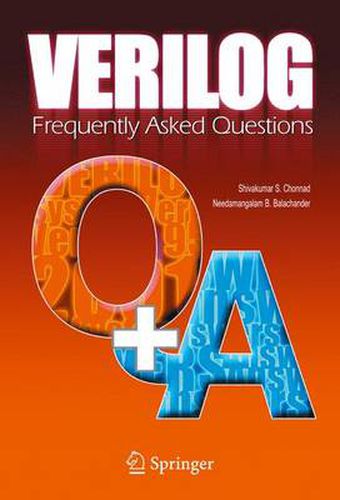Readings Newsletter
Become a Readings Member to make your shopping experience even easier.
Sign in or sign up for free!
You’re not far away from qualifying for FREE standard shipping within Australia
You’ve qualified for FREE standard shipping within Australia
The cart is loading…






This title is printed to order. This book may have been self-published. If so, we cannot guarantee the quality of the content. In the main most books will have gone through the editing process however some may not. We therefore suggest that you be aware of this before ordering this book. If in doubt check either the author or publisher’s details as we are unable to accept any returns unless they are faulty. Please contact us if you have any questions.
The Verilog Hardware Description Language was first introduced in 1984. Over the 20 year history of Verilog, every Verilog engineer has developed his own personal bag of tricks for coding with Verilog. These tricks enable modeling or verifying designs more easily and more accurately. Developing this bag of tricks is often based on years of trial and error. Through experience, engineers learn that one specific coding style works best in some circumstances, while in another situation, a different coding style is best. As with any high-level language, Verilog often provides engineers several ways to accomplish a specific task. Wouldn’t it be wonderful if an engineer first learning Verilog could start with another engineer’s bag of tricks, without having to go through years of trial and error to decide which style is best for which circumstance? That is where this book becomes an invaluable resource. The book presents dozens of Verilog tricks of the trade on how to best use the Verilog HDL for modeling designs at various level of abstraction, and for writing test benches to verify designs. The book not only shows the correct ways of using Verilog for different situations, it also presents alternate styles, and discusses the pros and cons of these styles.
$9.00 standard shipping within Australia
FREE standard shipping within Australia for orders over $100.00
Express & International shipping calculated at checkout
This title is printed to order. This book may have been self-published. If so, we cannot guarantee the quality of the content. In the main most books will have gone through the editing process however some may not. We therefore suggest that you be aware of this before ordering this book. If in doubt check either the author or publisher’s details as we are unable to accept any returns unless they are faulty. Please contact us if you have any questions.
The Verilog Hardware Description Language was first introduced in 1984. Over the 20 year history of Verilog, every Verilog engineer has developed his own personal bag of tricks for coding with Verilog. These tricks enable modeling or verifying designs more easily and more accurately. Developing this bag of tricks is often based on years of trial and error. Through experience, engineers learn that one specific coding style works best in some circumstances, while in another situation, a different coding style is best. As with any high-level language, Verilog often provides engineers several ways to accomplish a specific task. Wouldn’t it be wonderful if an engineer first learning Verilog could start with another engineer’s bag of tricks, without having to go through years of trial and error to decide which style is best for which circumstance? That is where this book becomes an invaluable resource. The book presents dozens of Verilog tricks of the trade on how to best use the Verilog HDL for modeling designs at various level of abstraction, and for writing test benches to verify designs. The book not only shows the correct ways of using Verilog for different situations, it also presents alternate styles, and discusses the pros and cons of these styles.